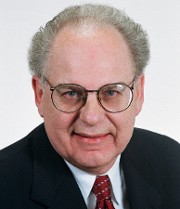 A new world has opened up for supply chain professionals to blend their strategy, technology and tactics for creating lasting bottom-line results. This isn’t a theory, but a fact in this high-tech, fast-paced healthcare environment. However, you must consciously decide to bend these three principles into a uniform savings or operational model if you are to receive the full benefits of this concept.
A new world has opened up for supply chain professionals to blend their strategy, technology and tactics for creating lasting bottom-line results. This isn’t a theory, but a fact in this high-tech, fast-paced healthcare environment. However, you must consciously decide to bend these three principles into a uniform savings or operational model if you are to receive the full benefits of this concept.
Case in point! Just the other day a business analyst called from a 300-bed hospital wanting my firm to create a software product that would track their value analysis team’s actual savings vs. savings goals. Then they wanted us to design a scheme of red, green and yellow lights (like a traffic signal) to alert their VA teams where they stood at any given time against their agreed-upon savings targets. I then asked this analyst if that is all he required? He stated that he thought it also would be nice and cool (his words) to have a dashboard to track their operational metrics (i.e. supply expense as a percentage of revenues, etc.) against benchmarks, since it was getting harder to manipulate this data manually. What do you think was missing from this supply chain professional’s conceptual design of this software?
Maybe you have already guessed that this supply chain department was missing the whole point of employing any new technology: It isn’t to just make your job easier, impress others (remember his “cool” statement) or organize your manual data in a computerized format. It’s all about utilizing technology because it will drive, enable or enhance your supply chain strategies and tactics. It’s not just to make you manual system prettier!
We found this to be the case with our own utilization management software. It began as a conscious and deliberate strategy to identify utilization misalignments in healthcare organizations supply streams. Our tactic for doing so was to use spreadsheets to capture our utilization metrics and then measure them against our clients’ peer hospitals. The challenge was how to collect and process millions of benchmarks using spreadsheets. We quickly found this to be a mission impossible task. That’s when we developed and launched our utilization management software, which blended our strategy with technology along with our tactics into a operational model for identifying, strategizing and eliminating these wasteful and inefficient practices.
Can you see the difference between examples one and two? In my first example, my prospective client wanted to employ software as an afterthought. While in my second example, our new utilization software product design was solely driven by our strategy and tactics – not for any other purpose.
So when you are looking to improve the performance of any of your supply chain operations with new technology, first look to the strategies and tactics you are trying to achieve to guide you in your decision making. To reverse this process (technology first, then think strategy and tactics as an afterthought) is a formula for disaster.
Robert T. Yokl
Chief Value Strategist
Strategic Value Analysis® in Healthcare

Be the first to comment on "Yokl: Blending Strategy, Technology and Tactics to Create Lasting Results"